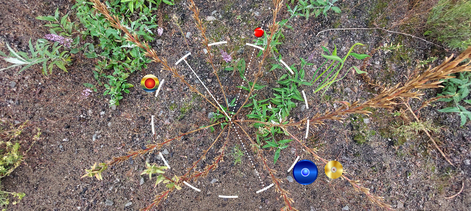Atelier : SLOW TERRAM
Atelier : SLOW TERRAM
Proposé dans le cadre de Super Terram (an action research project focusing on Brussels' soils and the life animating them. It is carried by BRAL, ULB architecture and 51N4E. With the collaboration of: Falma Fshazi , The design unit Urban Nature and LoUisE of ULB, Ecotechnic, Plant en Houtgoed, Valérianne Poidevin and Studio1Bis. Super Terram is funded under the Innoviris Co-create program 2021- 2023.) par Denicolai & Provoost
Gratuit mais sur inscriptions via ce formulaire Gratis maar bij inschrijvingen via dit formulier avant_voor 11.10.22.
C'est le moment de récolter les traces dessinées et de partager nos vécus de l'atelier du 17 octobre dernier autour d'un café, d'un thé..
Les traces dessinées feront l'objet d'une édition collective.
Pour qui ne pourra pas être présent*e le 20.10, il y aura une boîte à réception auprès de Cécile Stas, au DAF / Pl. Eugène Flagey 19, 1050 Bruxelles, Fac d'architecture, 2e étage, bureau Co.02.02. Ou la possibilité de nous envoyer digitalement vos dessins à l'adresse suivante: info@superterram.be
* Denicolai&Provoost : Denicolai & Provoost is an artistic duo comprised of Simona Denicolai and Ivo Provoost. By coming together, they indicate their interest in what is different, in the encounter, friction, and exchange. With their work they try to disrupt our habitual ways of thinking and routine behaviour. They ask: What can art do? How can art be used for sustainable change? Denicolai & Provoost have worked together for over twenty years, since the mid-1990s, using a multidisciplinary, process-based method called "sculptural action," in which they decouple existing elements from a familiar context, shifting and rearranging them in order to establish new narratives. They often examine questions concerning citizenship, identity and solidarity.
Denicolai & Provoost's practice has sociological overtones and usually interacts with an individual space's unique characteristics to disrupt normative ways of viewing a place and everyday movements within it. For each project they choose a specific discipline that helps define the meaning of the outcome. Spending focused time in different places teaches them about how social orders are formulated and, therefore, how they might be re-conceived. They make observations or enact scenarios in which people, objects, and stories become collaborators in a seemingly simple process that is playfully touching and complex. Such community forming underlines the inclusive value of art, which is often revealed through this collaborative process.
Their forms include performance, video work, installation, models and studies, all of which derive meaning from the interpretation of art as an active concept.

